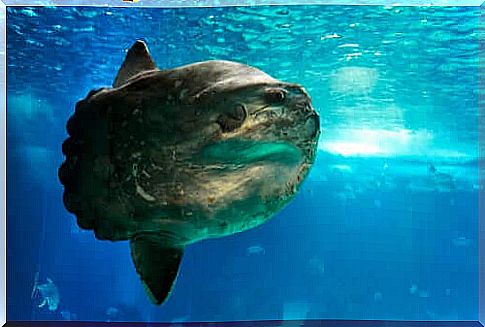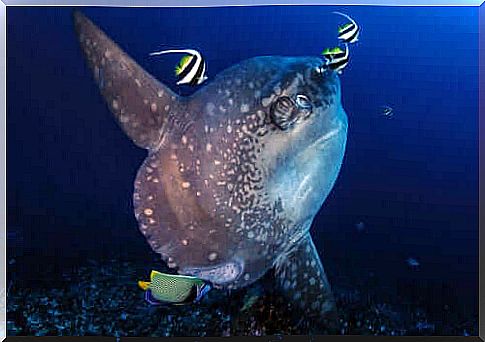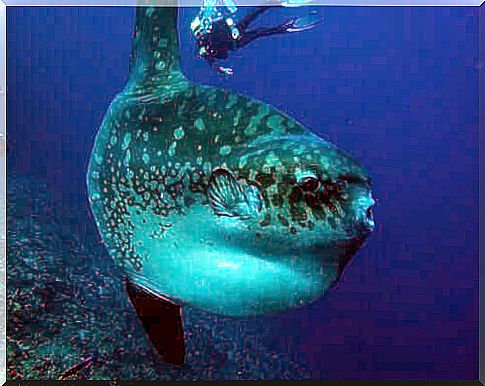The Sunfish, The Heaviest Fish In The World

The sunfish ( Mola mola) is not only extremely flashy in appearance, it is also the heaviest bony fish in the world. Bone fish are vertebrate animals whose skeleton is completely calcified, although they may still have certain cartilaginous parts.
They differ greatly from cartilaginous fish, such as sharks or rays, which have a cartilage skeleton, except for the jaw, which is bone. For this reason, we only find the jaws of prehistoric sharks and never other parts of the body.
Sunfish were persecuted in previous centuries, as their meat was considered a delicacy. Fortunately, these days it is only consumed in some parts of East Asia, and its fishing and consumption are totally banned in the European Union and other countries around the world.
Still, the number of copies in the world is decreasing. Therefore, the sunfish is a vulnerable species, according to the IUCN (International Union for the Conservation of Nature).
Sunfish Anatomy

The anatomy of the sunfish is very unique. Its body, as an adult, is laterally flattened. They do not have a tail fin, but instead have a structure called a clavus, which is a type of skin extension on the body that gives them a more agile appearance.
On the other hand, the dorsal and anal fins are extremely developed and, when expanded, the fish is as wide as it is long.
Like almost all fish, the sunfish is darker in its dorsal area and lighter in its ventral area. This serves as camouflage, as if a predator looks at them from above, they are mistaken for the darkness of the depths and, if viewed from below, may not be noticed due to the brightness of the light entering the surface.
Another curious aspect about the sunfish is that it can change its color if it feels threatened or is under attack.
Why is the sunfish so big?
Since the discovery of data on sunfish catches, really huge specimens have been found.
In 1910, on the east coast of Africa, near the Canary Islands, a specimen weighing more than 1,500 kg was captured, in other words, a ton and a half. Since then, even larger fish have been caught, with specimens weighing more than 3,000 kg.
A recent study published in the journal GigaScience indicates that the sunfish reach such large sizes due to a high growth rate. This is due to a series of genes that cause an overproduction of growth hormone.
In captivity, a sunfish has been observed to gain 820 grams per day for 15 months, a total of 400 kg in just over a year. If we compare it to the growth rate of a normal fish – between 0.02 to 0.49 kg per day – we can see that its growth rate is incredibly high.

predators
In the wild, sunfish don’t have many predators, just big sharks, killer whales and sea lions. The real threat of this animal, like that of many others, is the human being or its activity.
Although fishing is prohibited in many places, there are numerous cases of accidental catches. In other words, they are caught in nets without being the target of fishing. These nets are of the gill or trawl type, illegal in many countries, as they are the cause of the disappearance of many other species, such as the vaquita.
Although not a commercial fish, it is important for the market in Japan and Taiwan. In Spain, between 20 and 50 tons of sunfish meat are handled. Its fishing takes place in the western Pacific and the southern Atlantic.
Let’s hope that, in the not-too-distant future, this giant marine that so catches our attention will stop being fished and consumed for good. Its image enriches the seas and the imagination of many people.








